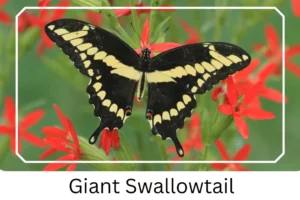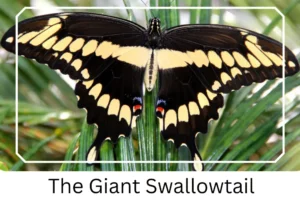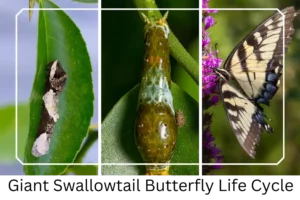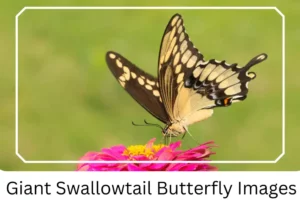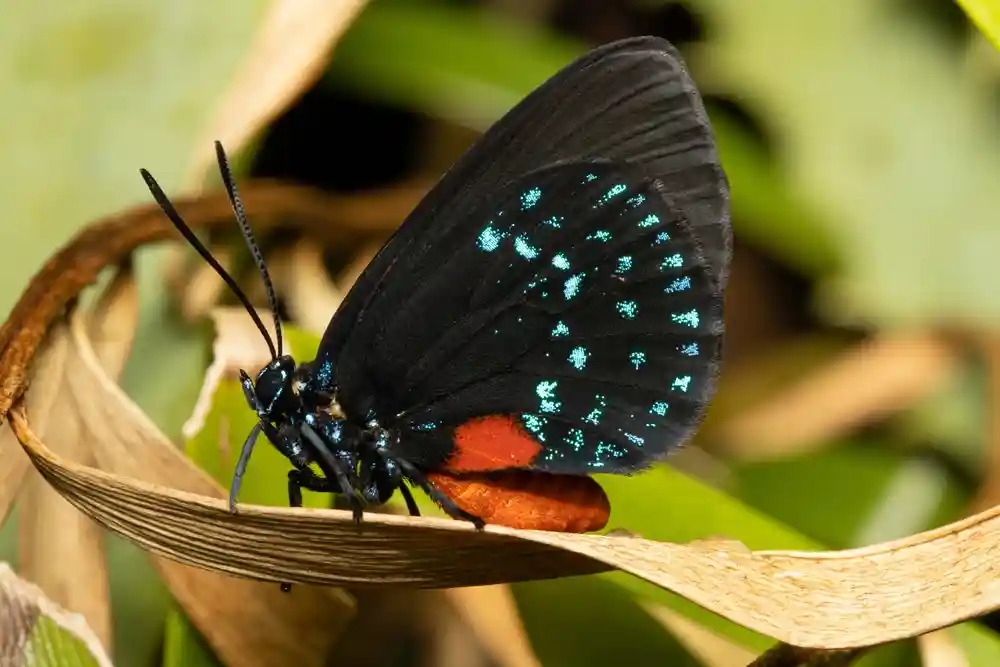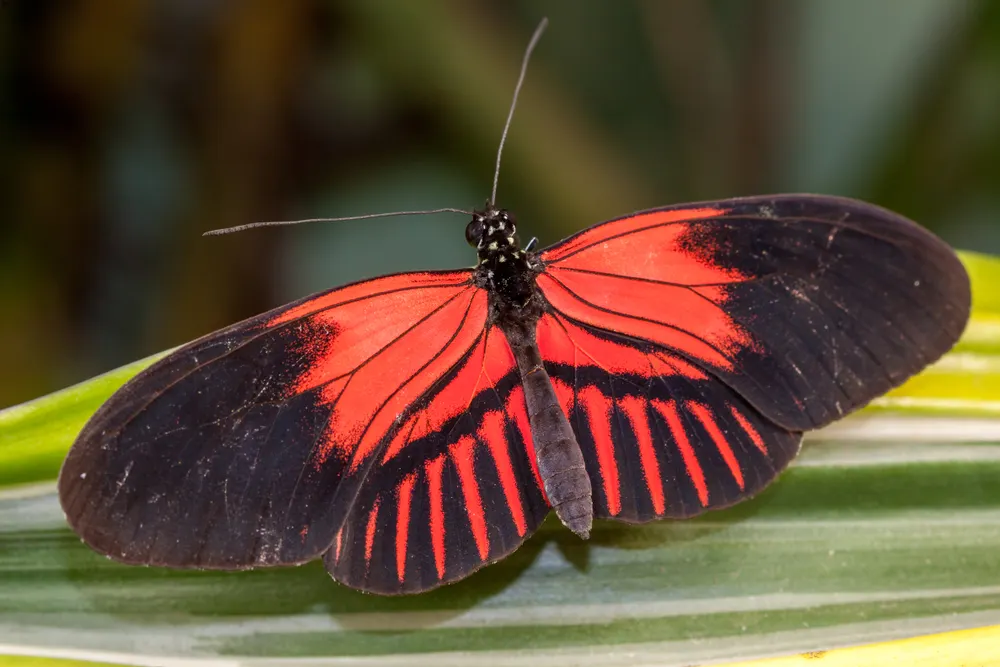Giant Swallowtail (Papilio cresphontes)
The Giant Swallowtail, a majestic butterfly native to various parts of North America, stands out as the continent’s largest species. Its caterpillars have gained fame for their unique camouflage strategy, mimicking bird droppings to evade predators. This butterfly’s lifecycle and behavior showcase nature’s fascinating adaptations and the intricate balance within ecosystems.
Scientific Classification
- Family: Papilionidae
- Genus: Papilio
- Scientific Name: Papilio cresphontes
Overview
The Giant Swallowtail butterfly, scientifically known as Papilio cresphontes, thrives across North America, extending to Venezuela, Colombia, and even parts of the Caribbean like Cuba and Jamaica. Its presence in diverse habitats, from deciduous forests to citrus orchards, underscores its adaptability and the critical role it plays in local ecosystems. This butterfly’s lifecycle, from egg to adult, reveals nature’s artistry and the survival strategies that have enabled it to flourish across such a wide range of environments.
Description and Identification
Caterpillar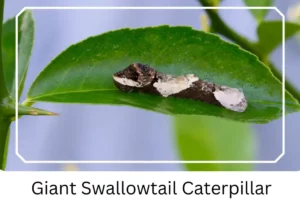
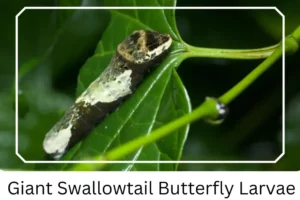
The Giant Swallowtail caterpillar exhibits a remarkable evolutionary adaptation for survival. Its larval stages, approximately two inches long, feature a black and brown body adorned with a saddle pattern. This unique coloring mimics bird droppings, a clever disguise against predators. The caterpillar undergoes five instars, each more intricately designed than the last, showcasing nature’s ingenuity in protective mimicry.
Pupa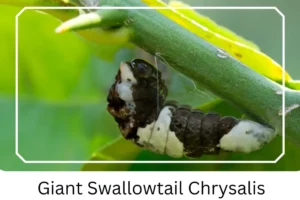
Transitioning to the pupal stage, the Giant Swallowtail chrysalis adopts a brown, mottled appearance, blending seamlessly with its surroundings. This camouflage continues to protect the butterfly during its vulnerable metamorphosis, illustrating the continuity of survival strategies throughout its lifecycle.
Adult Butterfly
The adult Giant Swallowtail is a testament to the beauty and complexity of nature. Exhibiting sexual dimorphism, males and females can be distinguished by subtle differences in coloration and patterns.
Sexual Dimorphism: Present in adults, with variations in wing color patterns between genders.
Color and Appearance: The open wings reveal a striking black and yellow horizontal stripe across the forewings, while closed wings display red and blue bands alongside the primary colors. Females feature thinner yellow bands with a distinctive black spot on the yellow oval band, whereas males boast a thicker yellow band without the spot.
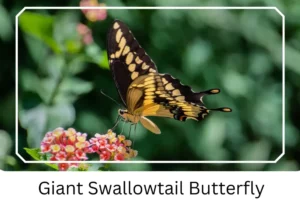
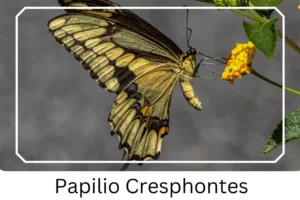 Average Wingspan: Males range from 15-19 cm (5.8-7.4 in), and females from 14-18 cm (5.5-6.9 in), underscoring their status as North America’s largest butterflies.
Average Wingspan: Males range from 15-19 cm (5.8-7.4 in), and females from 14-18 cm (5.5-6.9 in), underscoring their status as North America’s largest butterflies.
Flight Pattern: Their large wingspan enables fast, agile flight, allowing them to cover long distances efficiently with minimal effort.
Eggs
The eggs of the Giant Swallowtail, small with a brown or sometimes orangish appearance, highlight the beginning of this butterfly’s life cycle. The color variation hints at the diverse strategies employed from the very start of their lifecycle.
Quick Facts | |
| Distribution | Across North America to Venezuela, Colombia, Cuba, and Jamaica. |
| Habitat | Found in deciduous forests, citrus orchards, and more. |
| Lifespan of Adults | Approximately 6-14 days. |
| Host Plants | Prefers sweet orange, alongside lime pricklyash and others. |
| Adult Diet | Nectars from bougainvillea, lantana, and other plants. |
How to Identify Giant Swallowtail?
Identifying a Giant Swallowtail butterfly involves looking for specific markers in its appearance and behavior. Look for its impressive wingspan and the distinctive black and yellow patterns on its wings when opened. The unique red and blue bands visible when the wings are closed are also key identifiers. Observing the flight pattern can provide clues; the Giant Swallowtail’s strong, agile flight is characteristic of its species. Additionally, the presence of caterpillars resembling bird droppings on citrus plants can indicate Giant Swallowtail activity in the area. Understanding these identification markers can enhance your ability to recognize and appreciate this magnificent butterfly in its natural habitat.
Did You Know?
- The Giant Swallowtail is affectionately known as the “orange dog” or “orange puppy” due to its larvae’s preference for orange tree leaves, posing a challenge to citrus farming.
- This butterfly’s larvae’s ability to mimic bird droppings is a fascinating example of evolutionary adaptation for survival.
- Despite its short adult lifespan, the Giant Swallowtail can travel great distances, contributing significantly to the pollination of a wide variety of plants.
Conclusion
The Giant Swallowtail butterfly exemplifies the beauty and complexity of nature’s designs. From its unique camouflage strategies as a caterpillar to its majestic flight as an adult, this species captures the imagination and underscores the importance of biodiversity. Understanding and appreciating the Giant Swallowtail not only enhances our enjoyment of nature but also highlights the importance of conserving the diverse habitats that support such magnificent creatures.

